Witches
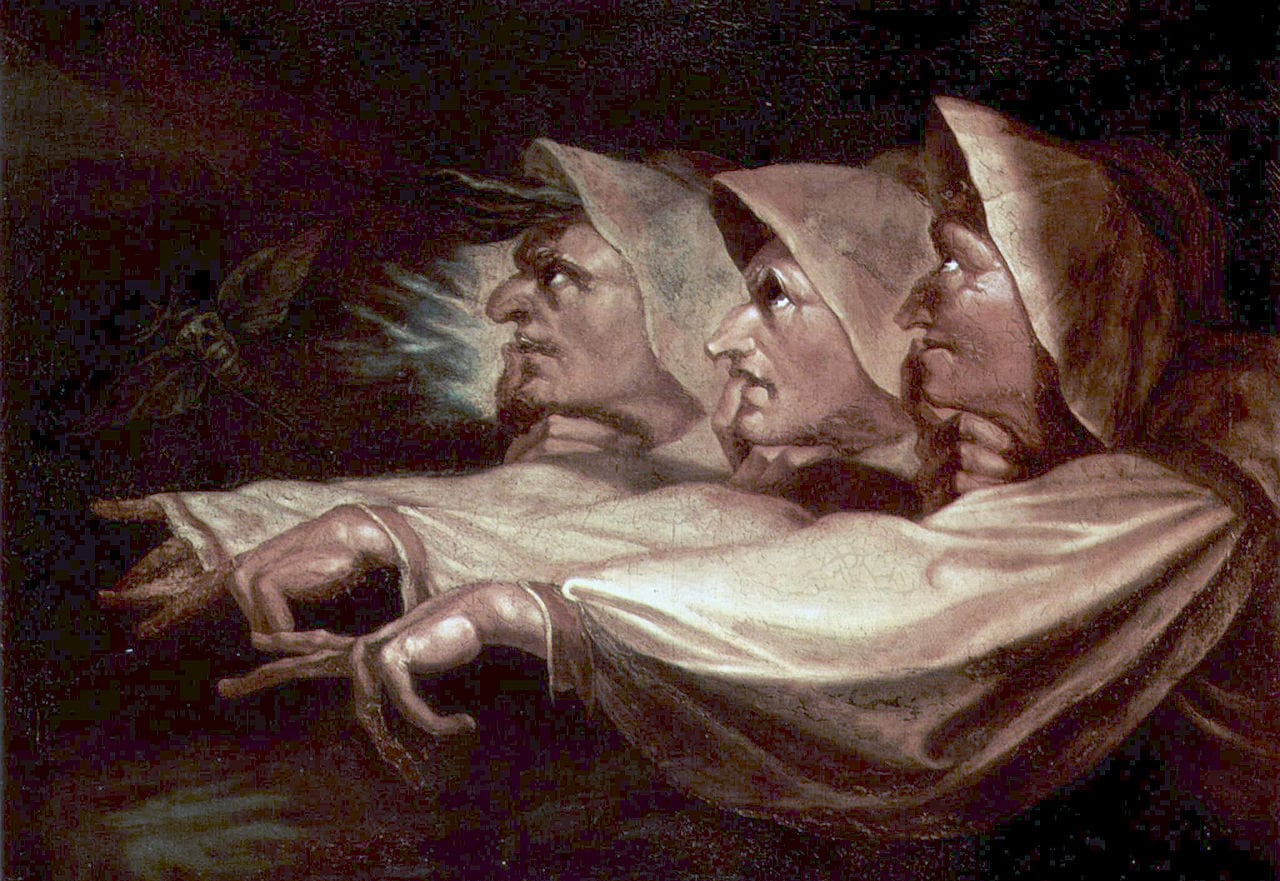
The most interesting aspect of witches is that they like to have sex with the Devil, according to most experts, and the best paintings and woodcuts of these orgiastic witches are by the Renaissance Germans. There was none better than Hans Baldung Grien, whose Three Witches and Witch and Dragon, are below. They are from 1514-1515 (the upper image is now in the Louvre). He was a student of Dürer and he is associated mostly with Strasbourg, then part of the Holy Roman Empire.
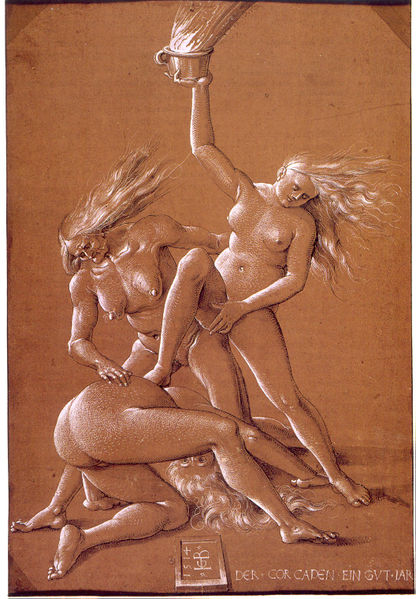
These paintings and woodcuts were done not long after the notorious anti-witch propaganda known as the Malleus Maleficarum ("Hammer of Witches") first appeared, in 1487, which would come into its own during the witch burnings of the mid-1500's. It was also right before Martin Luther's act of defiance in Wittenberg in 1517. Why Baldung was so interested in erotic witches never has been dealt with adequately by art historians, many of whom seem appalled at such frankness. Yet he fits into the bizarre religious times he lived in, when charms and incantations could render a man impotent (the literature on the subject is extensive and fascinating). Catholic and Protestant churches fostered the notion that Satan was everywhere and erotic witches were his servants. Tens of thousands of them died.
Baldung is credited with being the first to introduce explicit eroticism into European religious art with his portrayal of the Fall of Adam and Eve in 1511, which is remarkable for the way Adam holds Eve's breast. (Titian's Venus of Urbino wouldn't be until 1538, which improves on Giorgione's influential Sleeping Venus from circa 1510 which is not erotic.)
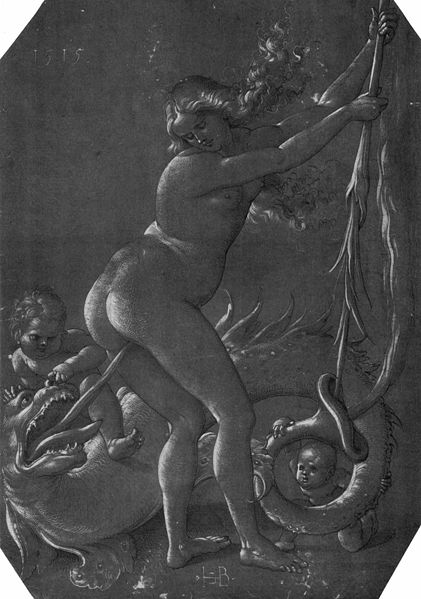
By 1600, the backlash against this kind of thinking had set in. Montaigne railed against the disobedient penis (placing the blame where it belonged), but also against the persecution of witches, notably in "Concerning Cripples" (1588), in which he tartly wrote: "the witches in my neighborhood are in danger for their lives when some new author appears whose opinion gives a body to their fancies."
Earlier sceptics included Johann Weyer in the Netherlands in 1563 (who nonetheless blamed the Devil) and Reginald Scot in England in 1584. Witches still were pursued through the 1660s but the pace slackened. The Salem Witch Trials were relatively late, in 1692-93. Witches continued to appear in Flemish and French art, often in an S&M context. This (below) is by French illustrator Martin Van Maële for a Jules Michelet book La Sorcière of 1911, in which Michelet defends witches as rebels against the oppression of the Catholic Church:
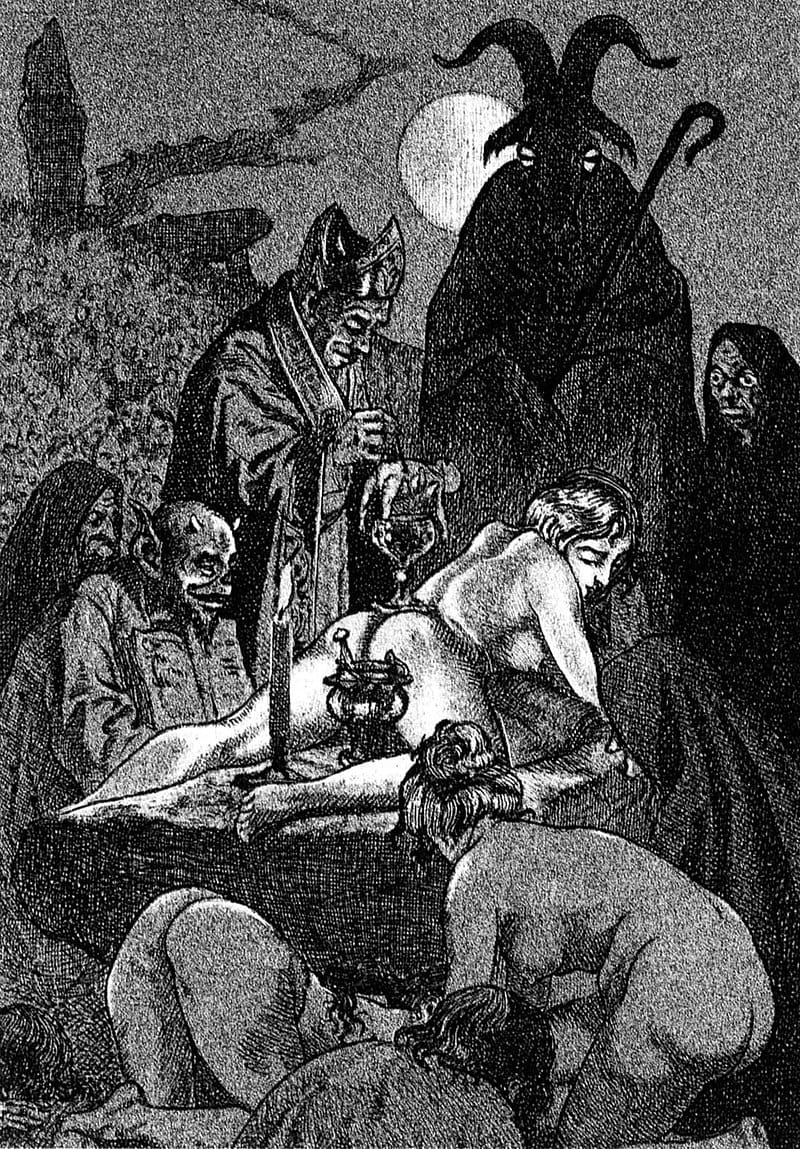
Russian painters have not tackled witches very often, although Russian folklore produced one of the most fearsome of them all, Baba Yaga. The most famous painting of her is by Ivan Bilibin but I like this lesser known one by Viktor Vasnetsov from 1917, in which she is riding her distinctive mortar and pestle and carrying the young heroine Vasilisa.
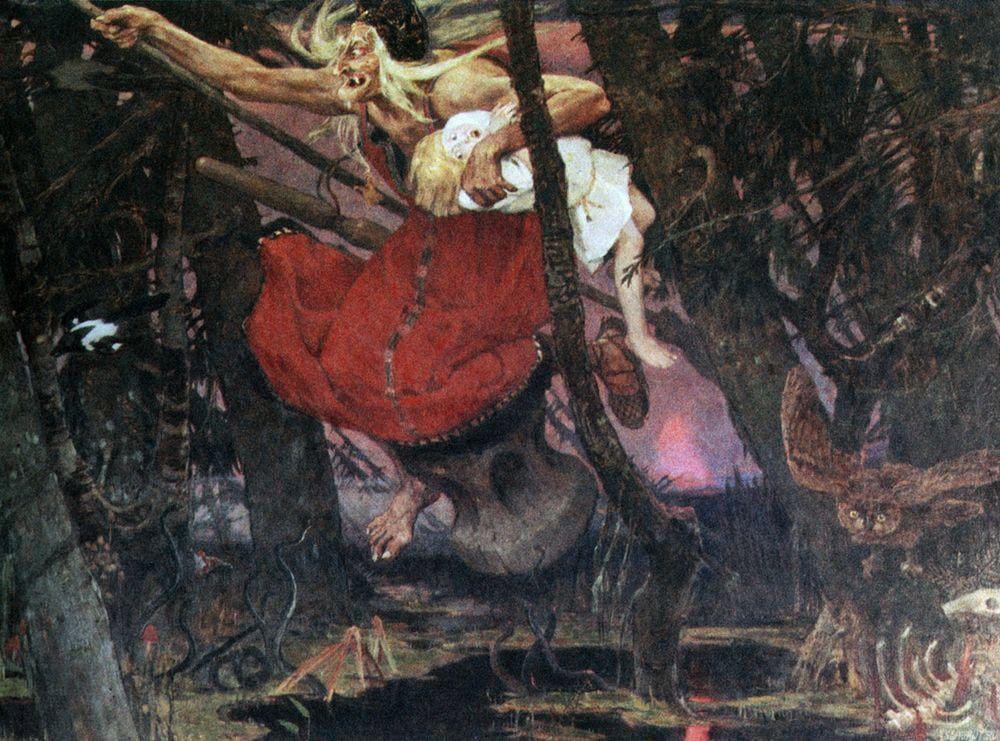
In European folklore, witches are generally evil. However, in Slavic folklore Baba Yaga is an ambiguous Mother Nature figure, ruling over the forest and the elements via (for example) the White Horseman, the Red Horseman and the Black Horseman, who bring Bright Dawn, the Red Sun and Dark Midnight. For Margarita, another famous Russian witch: here
For a Chinese witch, see here.
For a lot of witches, try this page.
